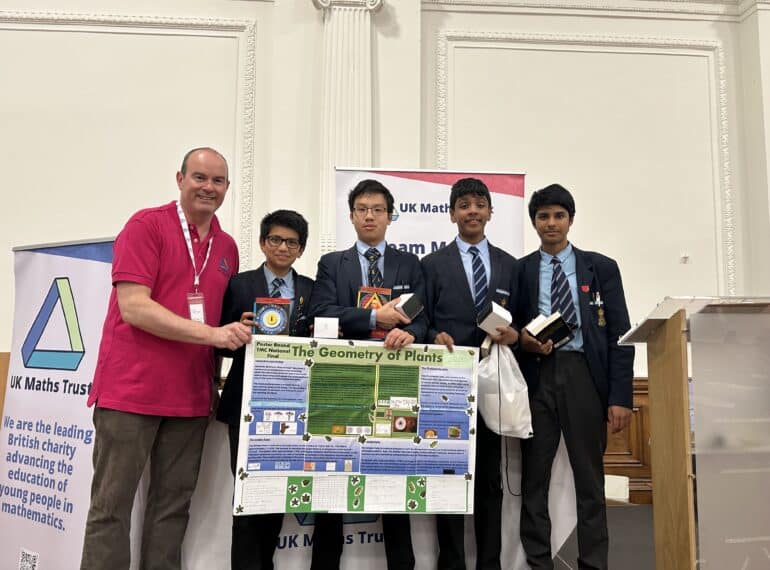
Having stormed through their regional round earlier this year, four QE pupils went on to take overall second place in the national final of the prestigious UK Maths Trust’s Team Maths Challenge.
 The four, who were competing against 71 other teams, took second place overall in the final, held at the Royal Horticultural Halls in central London.
The four, who were competing against 71 other teams, took second place overall in the final, held at the Royal Horticultural Halls in central London.
They performed strongly throughout the five rounds and were even shortlisted for a special, separate prize awarded for the poster round.
Head of Mathematics Jessica Steer said: “We are thrilled and immensely proud at the achievement of our four talented mathematicians who represented the School with such distinction on the national stage.
“Their calm and focused approach under pressure paid off brilliantly, securing our School second place in the country — an incredible achievement that reflects their hard work and passion for Mathematics.”
Representing QE were: Year 8’s Arya Hombal and Noble Laturia, along with Liam Chen and Advik Gupta, both of Year 9. They are pictured, top, with UK Maths Trust Vice Chair Steve Mulligan.
The national final followed 47 Team Maths Challenge events throughout the UK earlier this year.
It was the first post-pandemic national final: the last was held in 2019. Teams travelled from as far as the Scottish Highlands, Channel Islands and Northern Ireland. There were also seven guest teams from China.
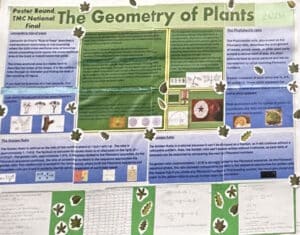 The event consisted of five demanding rounds: the Group Circus, Shuttle, Crossnumber, Relay, and Poster rounds. The rounds are designed to test mathematical thinking, teamwork and resilience.
The event consisted of five demanding rounds: the Group Circus, Shuttle, Crossnumber, Relay, and Poster rounds. The rounds are designed to test mathematical thinking, teamwork and resilience.
Overall first place went to The Perse School, Cambridge, while behind QE in third place were another independent school, Haberdashers’ Boys’.
Although QE has achieved success in the main Team Maths Challenge competition before, according to Head of Academic Administration, Wendy Fung, who was involved with Mathematics competitions for many years, the shortlisting for the poster competition is a QE first.



 Saim Khan, who enters Year 13 in September, was the winner for Key Stage 5, while William Joanes, who goes into Year 12, was first in the Key Stage 4 category. QE also featured among the Key Stage 3 high-flyers, with Aaryan Prabhaker, who will be in Year 9, the runner-up for that age group.
Saim Khan, who enters Year 13 in September, was the winner for Key Stage 5, while William Joanes, who goes into Year 12, was first in the Key Stage 4 category. QE also featured among the Key Stage 3 high-flyers, with Aaryan Prabhaker, who will be in Year 9, the runner-up for that age group.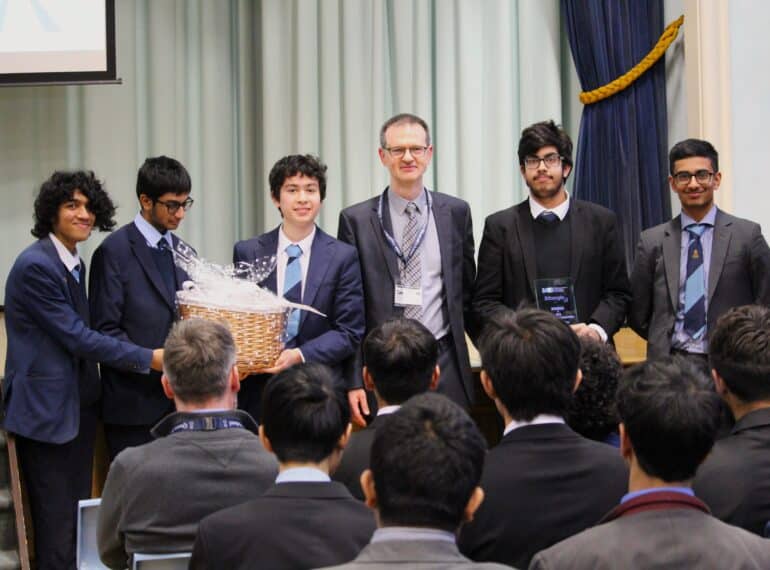
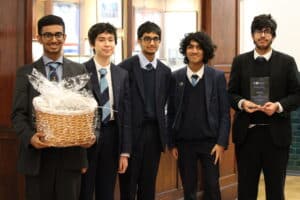 The five-strong team submitted the best answer to the final question, thus winning them the title in the competition run by education charity MEI (Mathematics, Education, Innovation).
The five-strong team submitted the best answer to the final question, thus winning them the title in the competition run by education charity MEI (Mathematics, Education, Innovation).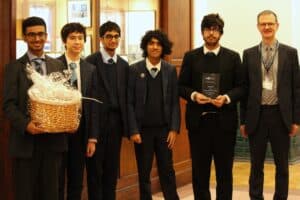 Mathematics teacher and Head of Academic Administration Wendy Fung said: “It essentially involved finding the smallest possible number that met a set of criteria. The question setters came up with an answer of 56, which they expected to be beaten by someone, but not by a great deal.
Mathematics teacher and Head of Academic Administration Wendy Fung said: “It essentially involved finding the smallest possible number that met a set of criteria. The question setters came up with an answer of 56, which they expected to be beaten by someone, but not by a great deal.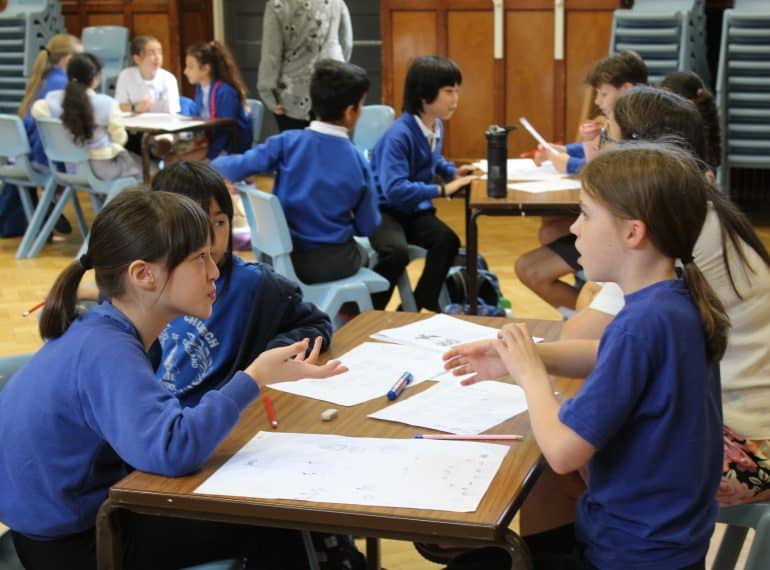
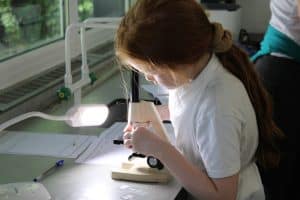 The events, which are part of QE’s partnerships work with the local community, are aimed at giving Year 5 girls and boys an early taste of secondary school education.
The events, which are part of QE’s partnerships work with the local community, are aimed at giving Year 5 girls and boys an early taste of secondary school education.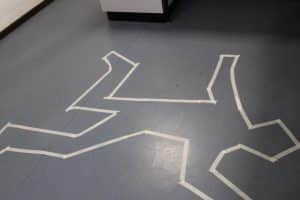 The first of the three days was the ever-popular Primary Forensics Workshop. The visitors were tasked with completing a number of experiments and analyses to work out who had murdered the Headmaster!
The first of the three days was the ever-popular Primary Forensics Workshop. The visitors were tasked with completing a number of experiments and analyses to work out who had murdered the Headmaster!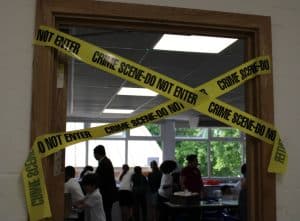 Boys from Year 12 helped staff run this workshop, engaging with the children at each station.
Boys from Year 12 helped staff run this workshop, engaging with the children at each station.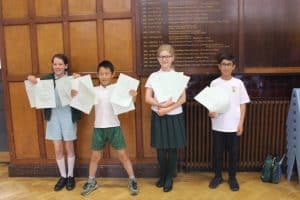 Firstly, teams were given the challenge of designing a castle on paper. They had to base their design on a certain set of criteria and follow a budget, requiring them to decide which features they wanted to prioritise.
Firstly, teams were given the challenge of designing a castle on paper. They had to base their design on a certain set of criteria and follow a budget, requiring them to decide which features they wanted to prioritise.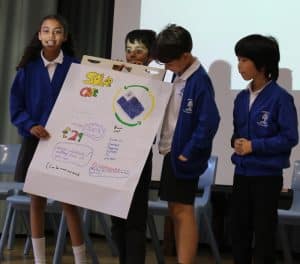 There was then a Sustainability Challenge run jointly by Geography and Economics. The children had to work in groups and devise a sustainable product. They designed their product, chose a logo and decided on their target market. Then each group presented to the other children in attendance. Among the ideas generated were: a mobile phone where the case is a solar panel and charges the phone, and a ‘plastic’ bottle where the bottle itself is biodegradable.
There was then a Sustainability Challenge run jointly by Geography and Economics. The children had to work in groups and devise a sustainable product. They designed their product, chose a logo and decided on their target market. Then each group presented to the other children in attendance. Among the ideas generated were: a mobile phone where the case is a solar panel and charges the phone, and a ‘plastic’ bottle where the bottle itself is biodegradable.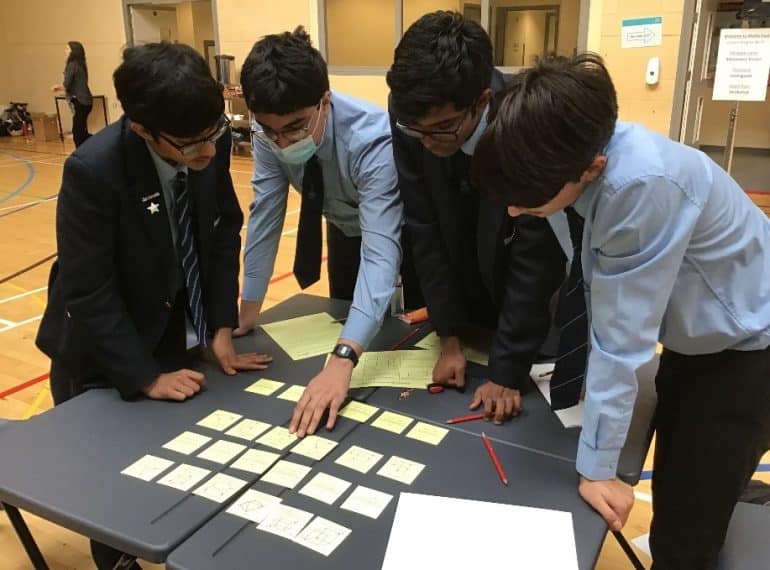
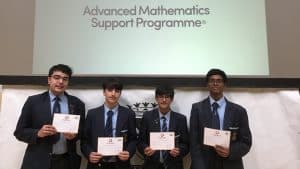 After being selected to represent the School in the event, the four emerged with a perfect score of 121 out of 121.
After being selected to represent the School in the event, the four emerged with a perfect score of 121 out of 121.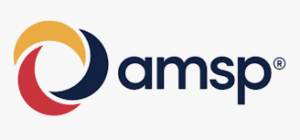 Hadi Al-Esia, Kovid Gothi, Saim Khan and Shreyaas Sandeep travelled to St Dominic’s Sixth Form College in Harrow on the Hill for the competition run by Advanced Mathematics Support Programme – a Government-funded national initiative.
Hadi Al-Esia, Kovid Gothi, Saim Khan and Shreyaas Sandeep travelled to St Dominic’s Sixth Form College in Harrow on the Hill for the competition run by Advanced Mathematics Support Programme – a Government-funded national initiative.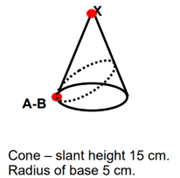 Card Sort: Competitors had to reimagine every 3D shape (such as cubes) to try to unravel the shortest way to pass through or over them. “This was by far the most challenging round for the team to tackle as it involved a new dimension of geometry for them – a combination of Pythagoras and 3D visualisation,” Mr Shah added. “They finished the round with less than 20 seconds to spare.” The team’s favourite problem came from this round (see picture right): competitors were asked to calculate the distance from A to B if the net [what a 3D shape looks like if opened out flat] were open for the cone.Saim said: I particularly enjoyed the card sort round – trying to reimagine and visualise the shapes in a new way was challenging but immensely rewarding too!”
Card Sort: Competitors had to reimagine every 3D shape (such as cubes) to try to unravel the shortest way to pass through or over them. “This was by far the most challenging round for the team to tackle as it involved a new dimension of geometry for them – a combination of Pythagoras and 3D visualisation,” Mr Shah added. “They finished the round with less than 20 seconds to spare.” The team’s favourite problem came from this round (see picture right): competitors were asked to calculate the distance from A to B if the net [what a 3D shape looks like if opened out flat] were open for the cone.Saim said: I particularly enjoyed the card sort round – trying to reimagine and visualise the shapes in a new way was challenging but immensely rewarding too!”